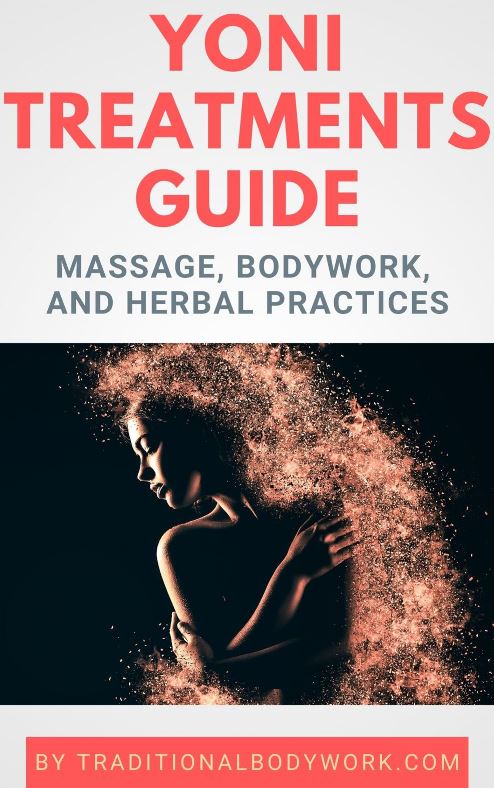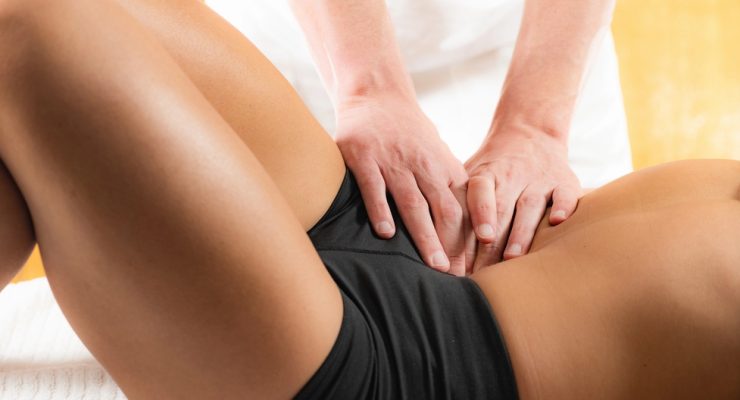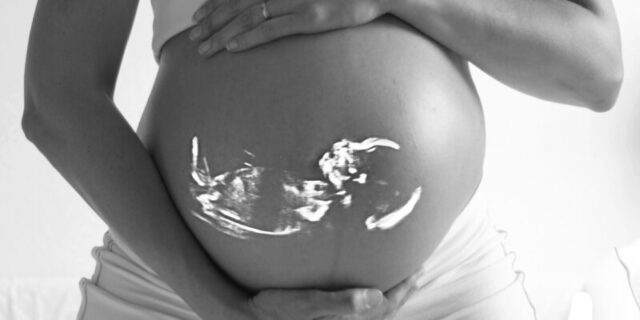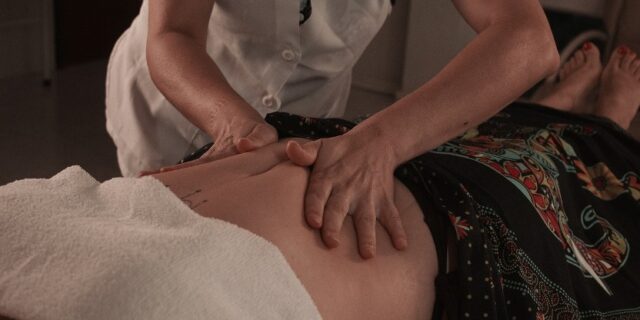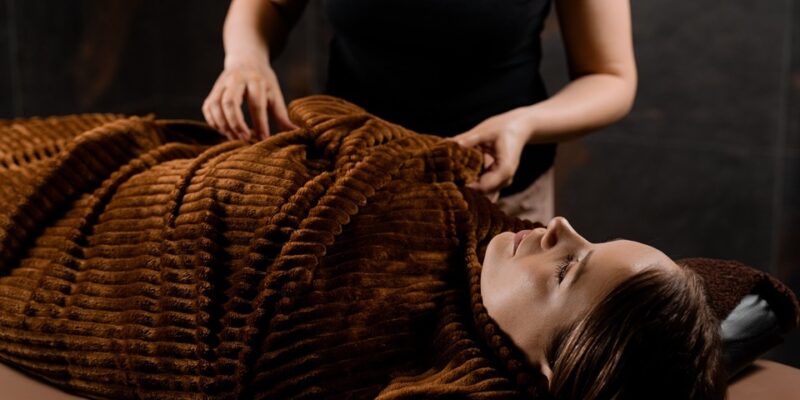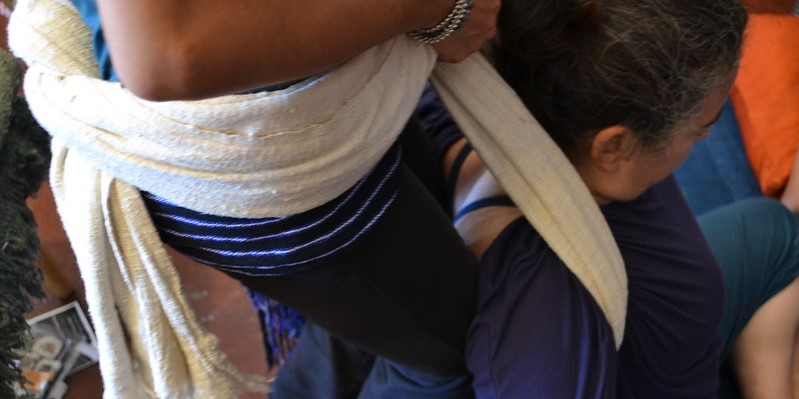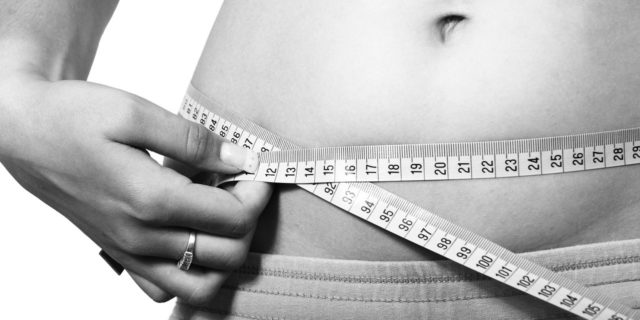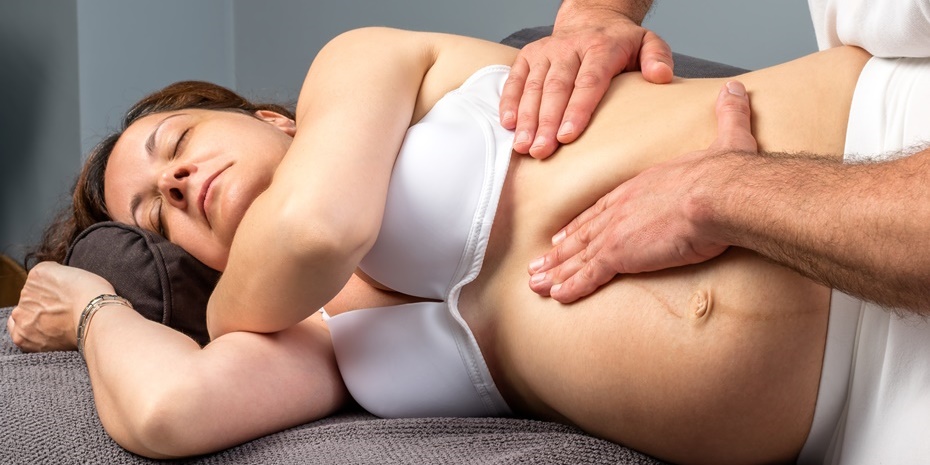
In this post, we’ll take a look at the different types of massage treatment modalities midwives and doulas may apply for women (and their newborns) during the pregnancy period, around childbirth, and in the postnatal confinement time.
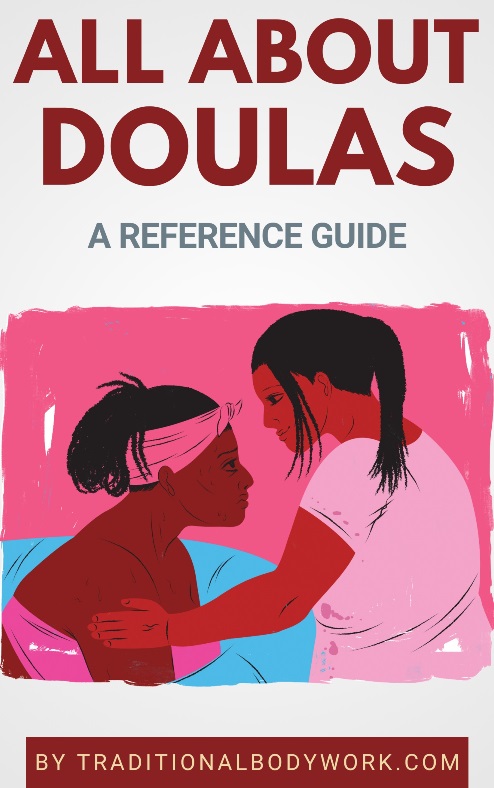
Midwives and doulas provide educational, informational, physical, and emotional support to women during pregnancy, childbirth, and the postpartum period. Typically, support is also extended to the newborn, and sometimes also to the partner, or to the rest of the family. Mind that — in contrast to doulas — midwives also provide medical care and are allowed to actually do the delivery.
The tasks of a midwife or doula are rather diverse: identifying high-risk pregnancies, general monitoring, delivering the baby, educating on antenatal care, breastfeeding, care of the baby, massage, exercise, diet, and reproductive health, to just name some topics.
Additionally, there are doulas who are specifically proficient in targeted prenatal (antenatal), perinatal, or postnatal care, and may carry titles such as birth doula, postnatal doula, massage doula, antepartum doula, and so on.
Giving regular massages to the new mother (or mother-to-be) and their baby may be one of the health promotion activities doulas and midwives occupy themselves with. It depends very much on the culture or on the country, but in some places massage therapy is an integral and standard part of mother and child care, and in others it may be optional care or only applied “as needed.”
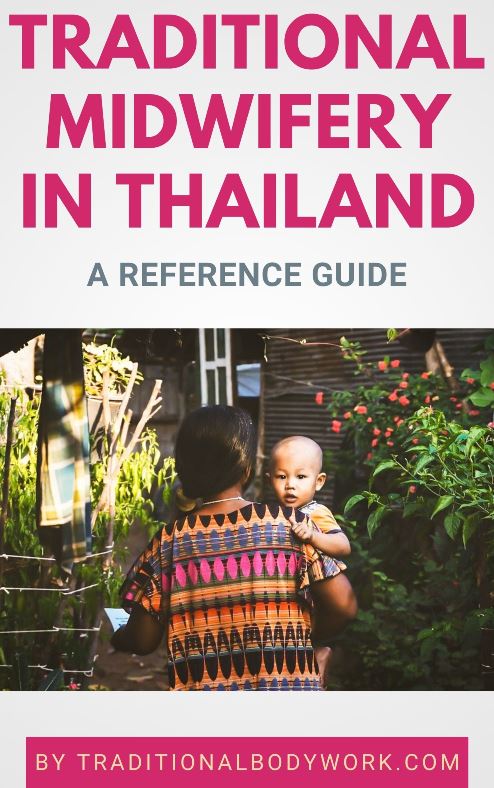
There are different types of massage therapies that may be applied, all depending on the stage of the pregnancy and/or the specific issues or health conditions at hand. Doulas and midwives may carry out relaxing and vitalizing pregnancy massages for the mother, restorative postpartum massages, perinatal massages to speed-up or ease delivery, and perhaps specialized therapeutic massages that address conditions of the uterus (womb), the pelvic floor, the perineum, or the breasts, among others.
Below we give you an overview of common massage types applied for women (and babies) during pregnancy, and around and after childbirth. It depends on the training of the midwife or doula what types of massages they masters Some types may have been taught in a midwife or doula education program, but often knowledge of specific types of massages is acquired later through continuing education courses or workshops, or through an official massage therapy college education.
Then again, some Massage Doulas first were certified and licensed massage therapists and later took on to becoming a Birth-, Postpartum-, or Full-Spectrum Doula.
Prenatal Massage
Prenatal Massage is also called Antenatal Massage or Pregnancy Massage. Massage therapy during the pregnancy period is usually gentle and can help to alleviate fatigue of pregnant women, help to stretch and relax muscles and joints, and increase energy levels.
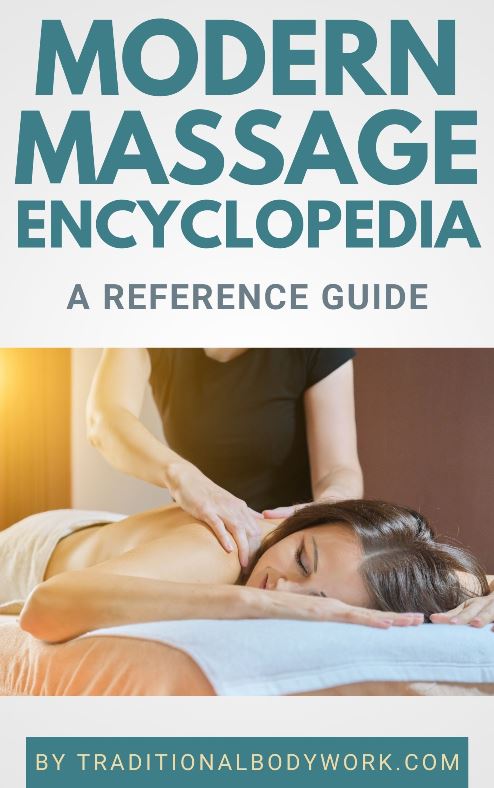
Massage and/or reflexology treatments in this period may also alleviate possible side-effects of the pregnancy, such as headaches, dizziness, sleeping problems, piles (hemorrhoids), constipation, anxiety, or hypersensitivity, and such.
Typically, pregnant women will not lie (long) on the abdomen during a massage session (which also depends on how far a woman is in her pregnancy), and the abdominal area is only very lightly and gently treated. In any case, most part of the session will be done with the pregnant woman lying on her sides and/or on her back.
As a general rule, massage therapy is only given after the third month of pregnancy and up to eight months. That is, no massage sessions are applied in the last month of the pregnancy, unless, for instance, the goal is to reposition the baby or uterus, or to speed-up delivery and childbirth.
Perinatal Massage
The perinatal period is the time immediately before and after childbirth. One definition is that it starts after twenty-two weeks of pregnancy and ends after seven days of childbirth, but other definitions may apply.
Perinatal Massage can have several aims, such as soothing tension in the womb, positioning the baby better in the womb, reducing pressure on the urinary system or on the back, ease pains during labor, stimulate actual delivery, or prepare the pregnant woman for a smooth delivery process.
There are many types of massage modalities here that can come to help. Notably traditional massages have a range of specialties to offer, such as Sengkak Uterus Massage, Thai Kud Thong Massage, or Maya Abdominal Massage, among others.
Postnatal Massage

Postnatal Massage or Postpartum Massage gives emotional and physical relief to the new mother from the stressful period of delivery and the new demands that come with taking care of the newborn.
Additionally, postnatal massages can prevent health problems that may occur immediately after delivery or later in life, such as postpartum depression, piles and constipation, painful intercourse, organ prolapses, pelvic floor issues, or menopausal problems, among others.
A Postnatal Massage is a type of restorative massage with the goal of normalizing blood circulation, revitalizing the new mother, expelling excess fluids and reducing swelling, eliminating toxins and blood clots, stimulating lactation, alleviating after-birth pains, and helping the uterus to shrink and reposition itself in its natural location.
Postpartum massages are usually given regularly during the postnatal confinement period, the latter spanning about six weeks. The postnatal massage techniques applied can be rather diverse and cover the whole range of massage therapy tools: reflexology, abdominal binding, hot stones, herbal compresses, and acupressure, and so on.
Baby Massage
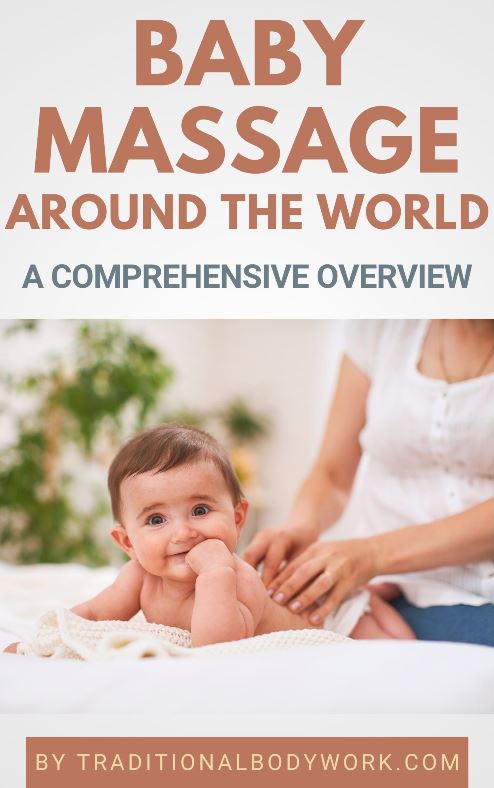
Baby Massage (also called Infant Massage) stimulates and strengthens the child’s muscular, nervous, respiratory and digestive system. It’s also thought to help prevent malformations, it calms the baby by reducing anxiety and stress, improves immunity, stimulates better sleep patterns, and relieves from common ailments such as abdominal and intestinal discomforts, colic, fever, or excessive crying, among other things.
In general, baby massages can support in a healthy development of the child’s body, mind, emotions and spirit. It’s common around the world to massage newborns, and it may be a midwife or doula who either massages and/or teaches the parents how to massage their baby.
There are many types of baby massages, modern and traditional, with a variety of goals and benefits. Typically, oils are used to massage a baby, and sometimes also warm herbal compresses. Usually, massage sessions for infants don’t take too long, that is, between five and twenty minutes max.

